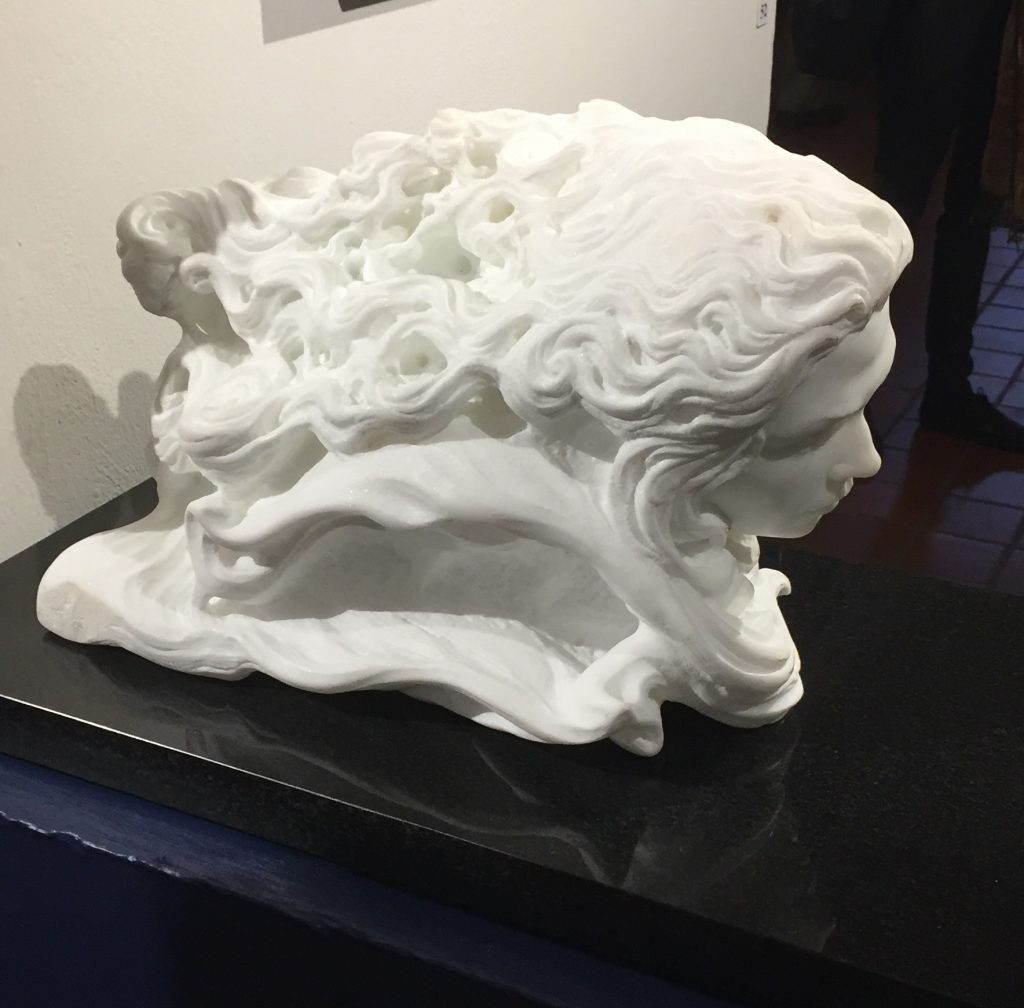Doppelgangers

Introspection, Dario Tazzioli, carrara marble.
I had some fascinating conversations with fellow artists at the reception for Doppelgangers at Oxford Gallery, where Jim and Ginny Hall have assembled another fine group show. It drew a large crowd, and it may have offered the largest number of pieces of any show they’ve ever put together, more than sixty. Many of the contributors took the theme as a pretext for submitting a pair of works, some two- and some three-dimensional, and yet everything seemed to fit perfectly into the available space. The idea of doppelgangers inspired or at least drew some exceptional work that had already been completed. As always, it’s impossible to do justice to everything on view, but again Dario Tazzioli’s sculpture was a magical affirmation that the artistic past is also its present and future. His Introspection, the bust of a young woman with a mane of flowing, wavy hair, carrara marble carved with a hand-turned bow drill—delivered to the show from Italy—stands as a quiet traditional tour de force, a testament to how nothing is off the table in art now. “Anything goes in art” used to mean that Warhol could fill a room with balloons and call it a masterpiece; now it means that the heritage of Donatello can still speak powerfully to a contemporary audience.
Tom Insalaco’s two paintings of faces offer the same lesson in a darker mood. They are the work of a man who has, for decades, been inspired by and driven to honor the Renaissance and baroque periods. He continues to quietly labor at his home studio in Canandaigua, NY, with more than one room turned into warehouses for his past work, all of it deserving a serious retrospective, but as if often the case with brilliant work done in obscurity, no one seems to be knocking on his door offering to revive interest in his remarkable career, which moved over the years from photo-realism to a reverence for the Old Masters. Since last year I’ve been studying and reading about Piero Della Francesca, whose work, especially, toward the end of his life, strikes me as powerfully alive and evocative and stylistically individuated in a completely contemporary way—which again suggests that emulating the mannerists or the Old Masters or the early Renaissance, or any other period, doesn’t need to be even a quasi-ironic undertaking, as it is with John Currin or Kehinde Wylie.
I had a long, probing conversation with Phyllis Bryce Ely about the recent work of hers I’d seen earlier in the day at Main Street Arts in Clifton Springs, NY: MORE